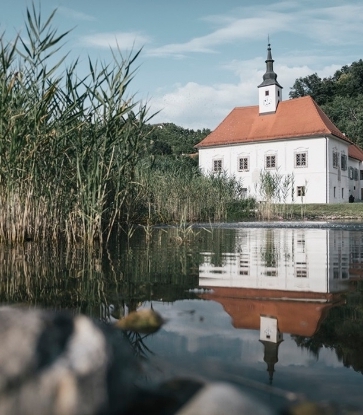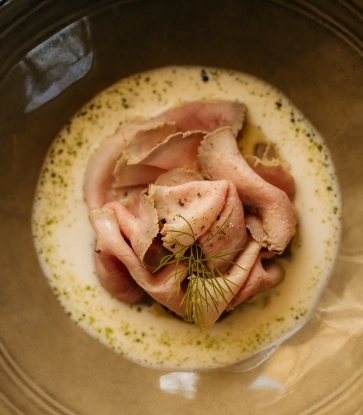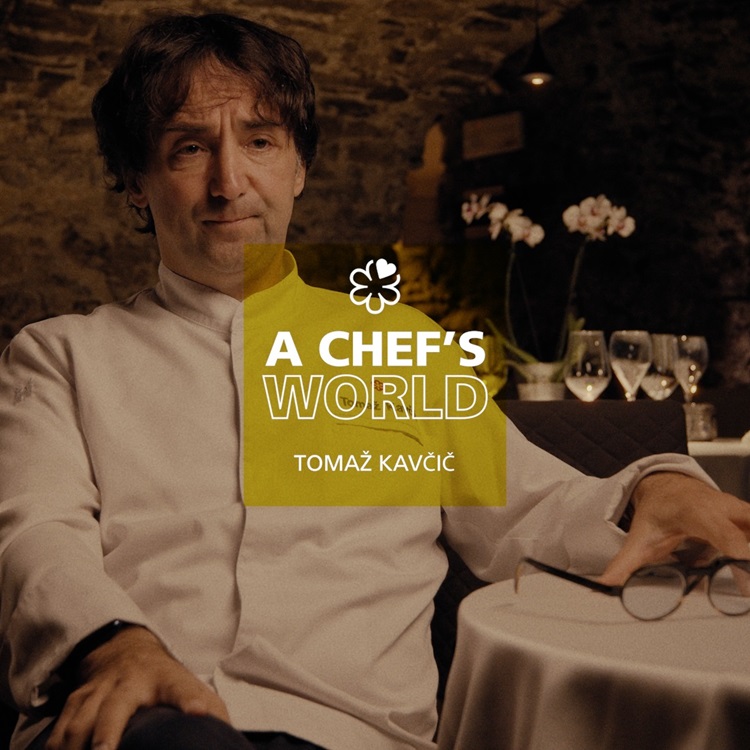At Mahorčič, chef Ksenija’s cuisine is a real homage to these brave women farmers, influenced by the traditional ways to preserve and ferment fresh produce. Her plates are strictly local and seasonal. Thanks to her Michelin Green Star, she hopes to convince more and more food industry professionals, including hygiene inspectors, that there are alternatives to plastic and aluminum in a restaurant’s kitchen. As an example, she proudly holds up a glass jar containing a potica, the traditional -and probably most famous - Slovenian cake, made out of rolled dough, which is usually presented as a round, elevated piece of pastry. Chef Ksenija is famous for her desserts - and rightly so. Her signature sorbet, made with pear from the Brkini orchards region, rests on a surprising block of ice containing juniper berries. It is subtle and tender, and elegantly finishes off an excellent meal dominated by the Jamar cheese flan, another one of her specialties, a divinely melt-in-the-mouth dish with truffles and a crispy egg yolk, based on an old, local and slightly spicy type of cheese.

What Is The MICHELIN Bib Gourmand Award?
Since 1997, The MICHELIN Guide’s Bib Gourmand has celebrated restaurants worldwide that serve exceptional food at great value— here’s what makes it special.

What is a MICHELIN Star?
The MICHELIN Guide explained — criteria for Stars; One Star versus Two Stars versus Three Stars; how service and decor factor in; and more. All your questions answered by our MICHELIN Guide Inspectors.

MICHELIN Guide Slovenia : fine cuisine and glamping with character, Pikol's winning formula
A large, romantic chalet built of pale timber, picturesquely reflected in a lake dotted with water lilies. A handful of log cabins strung along the water's edge, against the backdrop of an enchanted forest. A short distance from the Italian border, south of the town of Nova Gorica, this place is bound to make visitors feel rejuvenated : welcome to Pikol Lake Village, the domain of the Gašparin family.

MICHELIN Guide Slovenia : local wines and fine cuisine, a winning combination
Wine has a special place in Slovenian culture. For proof of this, you need look no further than St Martin's Day, an annual folk festival that celebrates the arrival of new wines on 11 November, when wine fever gives rise to festivities in vineyards across the country, from the Mediterranean to the Hungarian border. Around this date, most restaurants are fully booked and serve specific menus, in which wine plays the starring role. This is just one example of the close ties between gastronomy and viticulture in a country that has a very strong food-loving culture.













